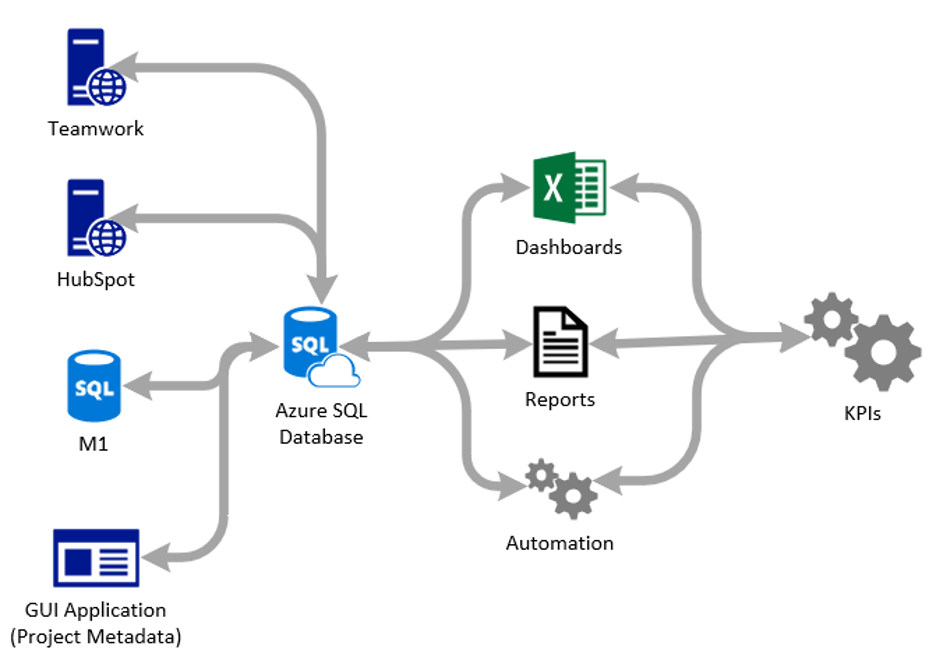+1 (317) 804-2330 | info@ballsystems.com | Blog
+1 (317) 804-2330 | info@ballsystems.com | Blog

As a business manager, it is critical that you have the information you need to understand the health of your business. The problem is that many companies have only a small subset of their information readily available. Many smaller companies live out of their checking account, monitoring only cash on hand. Still others have better insight into their profitability and balance sheet, but little else. As companies mature further, they watch other metrics like WIP, Finished Goods, COGS, Gross Margin, Taxes, etc. Still others monitor more real-time operational metrics like Job Status, Job Cost, Unit Cost, Units per hour/day/month, Overhead, OPEX, etc. And beyond even that, other companies leverage more real-time Key Performance Indicators (KPIs) which provide better capability to see quickly when their business is getting “off the rails”.
What is frequently missing is:
1. Capability to look across the organization, department, project, customer, etc.
2. Leading performance indicators
3. Forensic information to analyze issue root causes within and across business teams
4. Predictive tools
5. Real-time monitoring of KPIs
Ball Systems has been on a self-improvement journey for over 5-years now, investing heavily in our team, culture, processes, and structural changes. We have spent significant resources and time investing in:
1. Recasting and cementing our culture
2. Hiring rockstars and stellar teammates
3. Narrowing the focus of our enterprise to those things that we do best
4. Ensuring processes are clear and productive
5. Ensuring systems are in place for each function to achieve repeatability and consistency
6. Ensuring systems are in place for departmental and project planning and management
7. Ensuring systems are in place for cross-company management and strategic planning
Through various strategic planning efforts, internal discussions, and external benchmarking, we recognized that the next step in our maturation was to be able to look not only within our systems and processes, but also across various functions, teams, projects, and organizations.
But how?!?
We recognized that the company had a plethora of discrete data systems for functions including CRM, Automated Marketing, EPR, MRP, Project Planning, Project Documentation, Time Tracking, Work Standards, Project Status, Financial Reporting, Financial Planning, Quoting, and more. Each of these systems is highly integrated into our business and into our business processes, and each on its own was delivering value in its own sphere of control. The problem was that most of these systems were point solutions from separate providers. Layer on top of that various Excel files, Sharepoint portals, Network Drives/Files, etc. and you have a huge spider’s web of disparate systems that didn’t integrate with each other really at all.
 We also recognized through employee surveys and other discussions that redundant work, inconsistent reporting, and incongruous data views were leading to excessive labor, errors, and confusion depending on the situation. These were all contributing to a reduction of employee satisfaction and also lower team and company performance.
We also recognized through employee surveys and other discussions that redundant work, inconsistent reporting, and incongruous data views were leading to excessive labor, errors, and confusion depending on the situation. These were all contributing to a reduction of employee satisfaction and also lower team and company performance.
At the same time, the management team was considering various new frameworks and management principles from a variety of different sources.Having read Gino Wickman’s Traction we decided as a management team to implement a number of key facets of the Traction framework known as EOS (Entrepreneurial Operating System). A key component of the Traction framework is the identification and real-time tracking of KPIs for the company and each department, function, and person. Unfortunately, our systems were not integrated to provide much of what we would need.
What we recognized was a need to create a system to tie together all of our disparate data systems and data repositories in order to integrate business information for real-time visibility into our operations. At the same time, we recognized that the same system, once created, could also serve to eliminate much of the redundancy, errors, and poor communication between business functions. We eventually settled on an internal development project we have since titled “D3™” for “Data Driven Decisions™”.

This system has now provided seamless visibility to shared data sources and has streamlined information flows, eliminated errors, allowed cross-functional teams to communicate effectively, eliminated redundancy, and increased visibility for executive management, sales, and even for customers. Though it has been a substantial investment, we feel that our current D3™ system is already paying large dividends and has positioned us for even greater ROI in the future. We also have architected the system for ease of expansion and reconfiguration, so as new needs or identified or as business processes are modified, we can adapt quickly to new requirements.
We are so pleased with how D3™ has been received by our team, and with how well architected it is, that we are considering a new product/service offering around our new capability. Whether we pursue that business opportunity or not, we’re looking forward to D3 paying dividends to our team, to our company, and to our customers for years to come.

Ball Systems designs, develops, and delivers custom test systems and produces comprehensive build-to-print systems for companies creating or manufacturing critical electronic or electro-mechanical components for automotive, aerospace and defense and consumer appliance applications.
Blog Comments